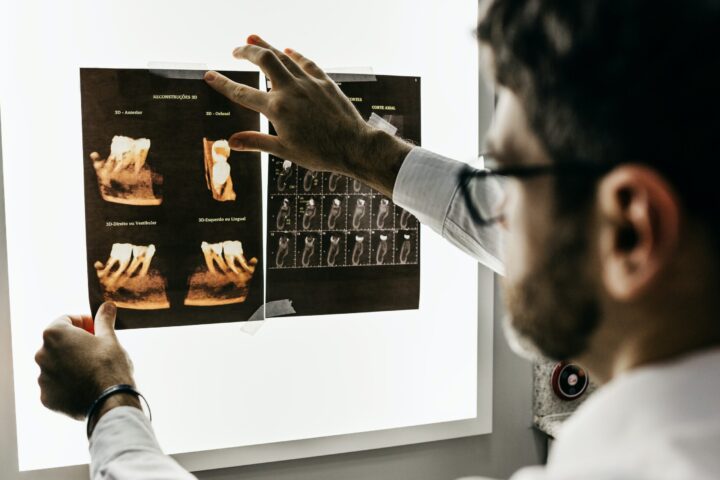Artificial intelligence is changing everyday medicine. One area in which AI particularly shines is pathology-that area of medicine studying diseases based on examinations of tissues, blood tests, and other laboratory results. With the shooting usage of AI into practice, one would also notice that laboratory medicine has to keep in step with development in order to be assured of quicker diagnoses, more correct diagnoses, and better patient outcomes.
The following review revisits a look at how AI is changing pathology, how it works, the benefits of this approach, some of the challenges faced, and what the future holds for AI-driven laboratory medicine.
What is pathology?
It’s the study of diseased pathology, most commonly via the microscope, blood tests, and tests done at the molecular level. These pathologists, in liaison with doctors, use this knowledge in an attempt to locate diseases, many of which emanate from cancers and infections, among several others.
Classical pathology depends upon pathologists peering with the naked eye onto slides of samples of tissues in search of abnormalities. Currently, AI is entering this segment to help a pathologist arrive at quicker and correct diagnoses.


How AI Is Used in Pathology
Most AI applied in pathology concerns machine learning and deep learning algorithms that are trained on medical information, including digitized images of tissue samples. Well, here is how AI modernizes the face of this field:
1. Image Analysis
That means a pathologist needs to find the patterns in the biopsy sample under the microscope-a rather time-consuming job and not perfect since human beings sometimes make mistakes. These would then be trained on digital images, outlining patterns in tissue samples ranging in conditions from cancer to inflammation.
These algorithms go through large volumes of data in a fraction of the time and are sure to catch subtle abnormalities perhaps not as easily caught by the naked human eye.
For instance, in diagnosing cancer of the breast, AI analyses tissues for malicious cells. Besides this, AI detects tumor margins showing the extent of spread in cancer. The technology will be able to support the pathologist in reviewing the slides and giving diagnoses at much higher rates at increased rates of accuracy.
2. Predictive Analytics
It predicts everything from the outcome in a patient by analyzing his or her genetic information to imaging studies for laboratory results, and to patterns in data showing how a given disease will likely work itself out and what kinds of treatments are likely to succeed.
For instance, in treating cancer, AI systems could study the genetic makeup of a tumor to predict its behavior given certain therapies. This would give personal treatment programs whereby doctors are more likely to be successful.
3. Automation of Routine Tasks
Most of the activities or tasks-whether routine or mundane-conducted within a pathology lab can easily be automated with AI interventions. Even slide preparation, scanning of images, and entry of data are easily handled by AI-driven robots, freeing the pathologist for high-order tasks which call for valued addition in the interpretation and decision-making process.
Such processing would automate the lab to enhance throughputs and reduce specimen processing and analysis times. The bearing, of course carries particular weight in high-throughput settings like cancer-screening programs where many thousands are compelled by need to process specimens in quite short order.
4. Molecular Pathology
AI also finds a place in molecular pathology, and new technologies have been forwarded in the study of genetic and molecular alterations at the level of cells. For example, AI can go over big data provided by NGS and similar technology on all the mutations associated with a particular disease. Data like that can also be used for diagnosing rare genetic disorders or seeking targeted therapies in cancer patients.
AI would also enhance diagnosis of the root of diseases for their treatment by studying DNA, RNA, and protein data.


Benefits of AI in Pathology
The benefits of AI applications in pathology, not only in patient care but also in making laboratory processes effective, are mentioned below:
1. Improved Diagnosis
Probably the most important benefit of AI in pathology is to increase diagnostic accuracy by human pathologists. Even very experienced pathologists may sometimes fail to recognize very subtle abnormalities for many reasons, such as fatigue, time pressure, or inherent complexity. This AI performs similar analytical reviews of large data sets but with speed and consistency; hence, there is reduced human error.
Examples are those AI systems trained in the recognition of cancer cells in biopsy samples. These show diagnosis rates often even better than those obtained from very experienced pathologists. Early detection it offers insures better results as far as the concerned patient is considered, especially about conditions where time becomes of vital importance, such as cancers.
2. Speedy Diagnosis
It would process the medical information and analyze it much quicker compared to a human doctor. It saves time for such diagnoses in pathology, considering some of them have only recently been discovered.
AI automates the analytics that a busy pathology lab would undertake and liberates pathologists to review more cases in less time, hence hastening diagnosis and saving time for the pathologists to reduce workload, hence avoiding burnout and being more productive.
3. Personalized Medicine
AI medical treatment simply puts into practice the very principle of personalized medicine when treatments are done based on data related to genotype, genetic profile, and molecular markers. Knowledge of this sort allows the pathologist or physician to tailor therapy in keeping with the peculiar features of the patient’s disease.
These could include studies into genetic mutations within a tumor by AI systems from cancer patients, for example, with the intent of suggesting appropriate and targeted therapies which would therefore be more effective. This would mean, therefore, better outcomes for the patients since the treatments would fall closer to the condition unique to each particular patient.


4. Improved Collaboration
AI in pathology will widen the scope of collaboration among the doctors. The pathologists who are going to compare digital images will share them, so their consulting colleagues will utilize the AI tools even around the world. This is very important in complicated or rare conditions where the opinion of others may be needed.
AI-based systems support the integration of data onto one accessible platform from imaging to genomics and to clinical data. It allows for the necessary support toward a multidisciplinary team of doctors in whatever assistance that shall be possible toward effective management and comprehensive care.
Challenges of AI in Pathology
Though AI promises new frontiers of change in pathology, the following are but a few challenges associated with its development and/or use:
1. Data Privacy and Security
Volume pathology AI systems deal in volume-sensitive information regarding personal records and genetics, among others, on a patient. Privacy and security assurance on the data has therefore been in greatest need. Of essence is to ensure that there will be the best degree of protection by the health provider against unauthorized access but equally not forgetting ethics regarding usage towards the owner’s data.
2. Quality Data
Since most pathological findings are hugely important for diagnosis and treatment, the accuracy in the AI systems highly relies on what kind of data they have gone through. Poor quality data and biased ones are the flaws in diagnosing or recommendation toward treatments. Data should be representative in populations and free from any errors because this will always be in demand when training an AI system.
3. Regulatory Approval
Much of this clinical trust will be gained when these AI pathology systems undergo thorough testing and validation processes. That is, the regulatory bodies, like the FDA in the United States, should establish these systems first as safe and efficient. Indeed, this is quite tiresome in which much time and energy can easily get lost to everything that may cause general acceptance not to take place.
4. Resistance to Change
There is further concern by some pathologists that the AI-powered technologies will eventually lead to job loss or distrust of the function and/or reliability of those AI systems. Training and education will become necessary for them to understand and appreciate the contribution of AI, and how this can add value to their professional work rather than being a threat.
Ethical Issues
Herein lies a host of ethical considerations involved in introducing AI into pathology, but not limited to:
1. Algorithmic bias in AI
AI systems are normally trained on previous data; if that is biased, AI recommendations can therefore also be biased. A certain example will be that an AI system that has viewed predominantly one demographic group performs suboptimally with others. High enforcement should see to it that more and more diverse data, representing actually, helps in training the system. This alone may perhaps be a way with which one might avoid biased results.
2. Accountability
In the diagnosis for patients, whether done or with involvement by AI systems, where would the liability lie in the case of any mistakes? Accountability policies and rules have to be crystal clear when it comes to the use of AI systems in clinical applications.
3. Patient Consent
Patient data forms a sea on which systems of AI float in pathology. A related but simpler ethical consideration is that patients have a right to know for what purpose their data is being used.
Where data of a patient is used in the development or improving of AI analysis, at every juncture of a situation where AI-driven development might be needed for patients, their prior informed consent for using their data shall be obtained in a manner to allow the patients to understand how the advances in technology in care come about.


Future of AI in Pathology
The future of AI in pathology is very bright. With further development of algorithms in AI, coupled with data, these systems will be far more accurate and dependable. In that case, AI can go to the front and center in the diagnosis of diseases and hence guide treatment for improvement in patient outcomes.
Of those, arguably the most exciting area is AI in liquid biopsies. Liquid biopsies are the less invasive detection of tumors when study has to be conducted on blood samples for tumor DNA. In those cases, various AI systems scan the genetic data of liquid biopsies for early cancerous changes, a noninvasive alternative to traditional tissue biopsies.
With AI increasingly embedded in pathology, this may well translate into elaborating on new and more personalized treatment strategies. Recommendations of therapies by an AI system would relate to the genetic background of the analyses and characteristics of his or her disease for the best treatment results with fewer side effects.
In conclusion, AI has changed pathology and opened a new frontier for revolution in diagnosis and treatment. In a nutshell, AI-driven technologies raise the stakes high for pathologists to bring about improved diagnostic precision right up to personalized treatment.
Besides the issues related to data privacy and quality, regulation approval is taken care of, which the future course of AI in pathology looks magnificent. Again, AI is acting as the avant-garde in shaping laboratory medicine for better diagnosis, quick and timely decisions with regard to therapy, and improvement regarding all conditions.


































Leave a Review